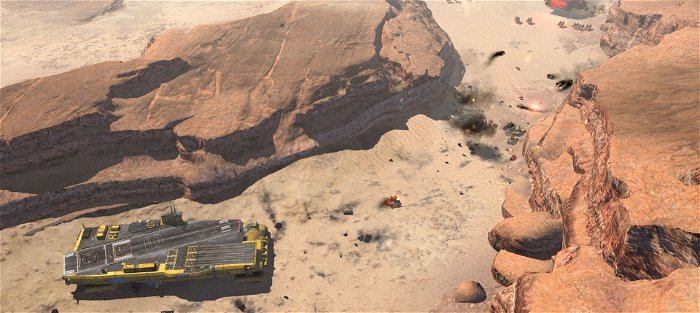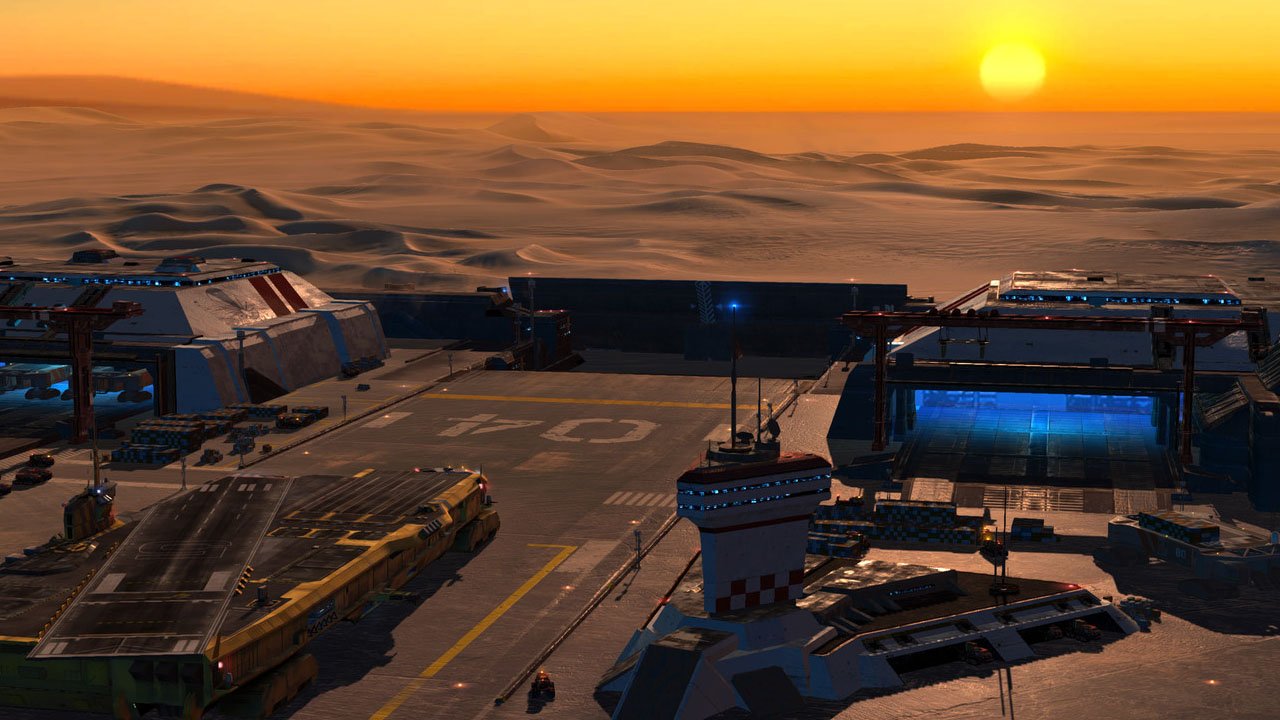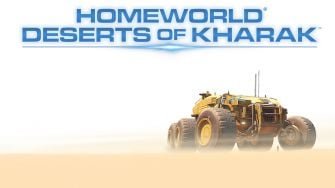I’ll confess to not being a diehard Homeworld fan the way that some of my friends are. I was always more of a Command & Conquer guy back then. Nevertheless, it’s been more than sixteen years since Homeworld dropped, and it’s been quite a ride for the IP on the way to its third official title.
Originally published by the now-defunct (but now sorta not) Sierra, Homeworld and developer Relic Entertainment were acquired by the also now-defunct THQ, which sold the rights to Gearbox Software during its liquidation in 2013. Even the title itself, Deserts of Kharak, has gone through a series of naming revisions; first being teased as Shipbreakers, then the confirmed inclusion in Homeworld canon as Homeworld: Shipbreakers, and finally settling in as Homeworld: Deserts of Kharak.

You’d be forgiven for being confused. You’d also be forgiven for being skeptical about a title published by a company with no experience in strategy games and developed by a first-time studio instead of the masters of strategy that spawned it. I know I certainly was.
Was.
I’m not going to lie and say that Deserts of Kharak is the next great RTS. It’s not. What it is, though, is a very important breath of life into a dying genre. Critically, though, it makes no attempts to reinvent the wheel, instead subtly illustrating how to better iterate on established norms.
Many RTS games have attempted to move towards dynamic bases that forego defensive entrenchments, but Deserts of Kharak is the first where it feels like a natural extension of the game’s narrative, rather than the other way around. Trapped on a dying planet, the last hope for your people is to set out to claim the “Primary Anomaly” of Homeworld legend with the carrier fleet Kapisi—a literal aircraft carrier-cum-crawler that serves as your expedition’s mobile command centre. Resources are desperately scarce, and often times the only safe way to reach them is to escort your lumbering hulk of a carrier to them, or divide your forces and use a support frigate as a remote drop-off. Combat observes a simple Rock-Paper-Scissors trinity, and terrain confers advantages in height and line-of-sight, but there are no other complex mechanics to muddy up the experience.

Unit construction and upgrades must be researched at your carrier, meaning that there’s plenty of room for micromanagement—especially when trying to protect such a hulk. Delicate it is not, though nor is it defenseless. In another clever twist, your carrier has four sub-systems you must allocate power between. Armour, self-repair, weapons, and weapon and sensor range must be juggled based on the situation at hand, evoking all the FTL-style stress you might expect. In the campaign, units persist from one mission to the next as part of your fleet. There are no freebies here. Every loss dips into the resources you have for both construction and upgrading; not just in the moment, but down the line as well. This mechanic imparts a real sense of persistence, as well as consequences to your actions, and it brings the whole campaign together. Unlike other games where missions are cherry-picked points of interest in the narrative, your fleet’s struggles feel cohesive and constantly relevant. It’s a great touch, but it’s not without its drawbacks.
That goes for the game as a whole, as well. The unit persistence means that there’s great care that must be taken at all times, and missions can draw out longer than you might expect, lest you risk losing a powerful veteran unit—a precious resource given the boons that experience imparts— and that RPS trinity means that engagements can become formulaic and predictable, even after factoring in special abilities. In addition, the game just doesn’t feel as tight as other established RTS titles. Squad-based orientation is a hassle, selecting individual units is a mess due to vehicles driving over and through each other’s hitboxes, and the camera sets itself to new and inconvenient angles with every cut or bit of dialogue, forcing you to readjust. While I love the inclusion of a skirmish mode featuring AI players, it has a grand total of 5 maps, and only one supports the maximum of six players.

Deserts of Kharak boasts an unprecedented beauty in its setting and world design, and its hand drawn-style cutscenes only add to that. It features a unique setting and a great story that sheds expected tropes. It sent chills up my spine on numerous occasions as it started to explain its connections to the Homeworld story. By all accounts it’s a good game, an excellent narrative prequel to the Homeworld series and a great first offering from Blackbird Interactive.
Yet I don’t find myself wanting to go back and play it with friends the way I do with something more refined like Supreme Commander. Its story is wonderful, its world gorgeous, but like the original Homeworld, it doesn’t steal my heart. God, it’s effing cool, though.






